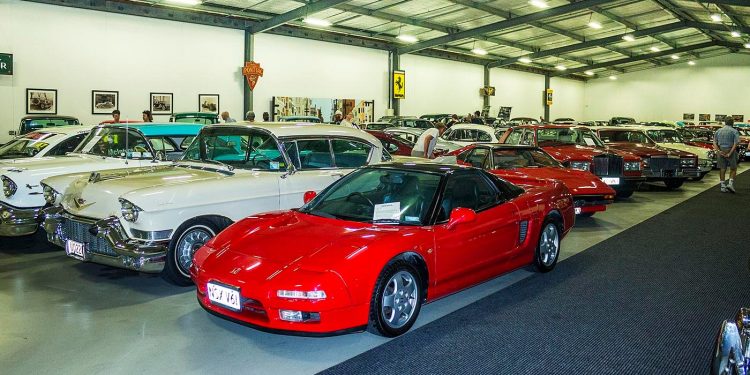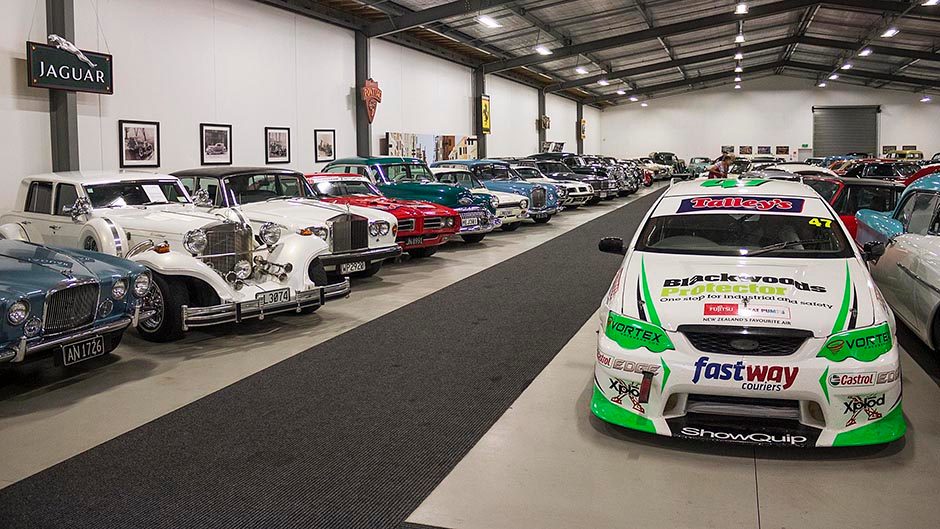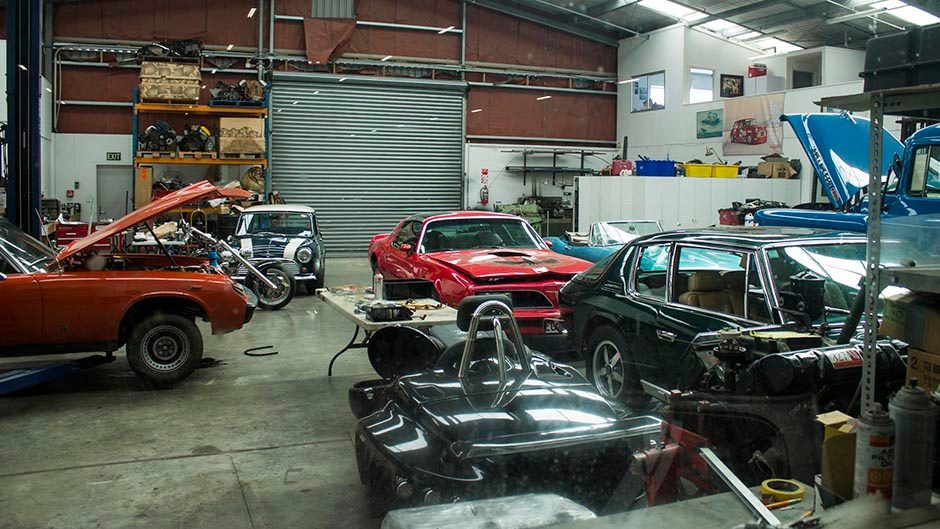Classics wow in Nelson
Words Kyle Cassidy | Photos KC
New Zealand has a few notable classic car collections, and one of those is situated in Nelson.
The World of WearableArts and Nelson classic car collection is situated on Cadillac Drive, fitting given the number of big Caddys on display. The museum houses not only classic metal but also a collection of the sometimes bizarre creations from the World of WearableArt competition, which originated in Nelson. The site of the museum was originally an ill-fated cotton mill before Standard Triumph NZ bought the land in 1964 to relocate its assembly plant from Christchurch. By the end of 1965 Triumph 2000s and Heralds were rolling off the lines there. It continued as a car assembly plant until the 1990s.
The museum opened in 2001, and a corner of the old CKD storage facility forms part of the display hall. There are over 120 cars in the collection, some on show in the main exhibition hall, the rest parked out back but still available to view. There is some rare and interesting metal from all eras, admission is $24, and you can spend a couple of hours taking it all in, even more if you fancy the frocks.
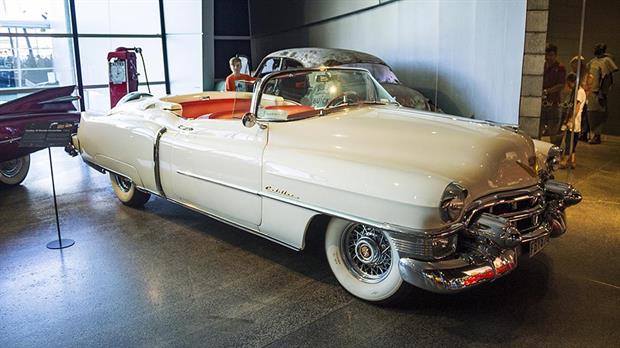
1953 Cadillac Eldorado
One of several Cadillacs on display is the impressive 1953 Eldorado Convertible. The car is the production version of the 1952 El Dorado “Golden Anniversary” concept and was made in limited numbers with just 532 minted, making it a sought-after model that can fetch $US250,000 today. When new, it was twice the price of the regular Series 62 car on which it was based. Design features include the bumper bullets, a wrap-around windshield and a cut-down beltline. Also novel were windshield washers, a signal-seeking radio, power windows, and a heater.
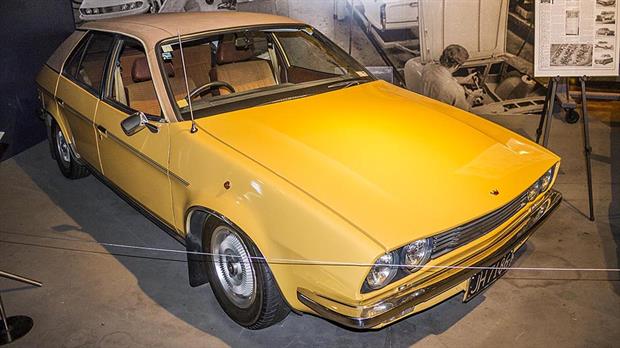
1980 Austin Princess
This British Leyland beauty was known as the Austin Princess in New Zealand. The Austin/Morris Wolseley 18 22 series model was first introduced in the UK in 1975, adopting the front engine transverse layout for increased interior space. The Princess was assembled in the Nelson’s New Zealand Motor Corporation plant from 1977. In 1979 the New Zealand cars would receive a larger 2.0-litre OHC engine and some 1980 units were made when production of the model ceased in 1982. This particular car is unrestored and originated from the Nelson assembly plant. Also on display is the front page of the Nelson Mail the day the assembly plant shut down, the article penned by ex-editor Paul Owen.
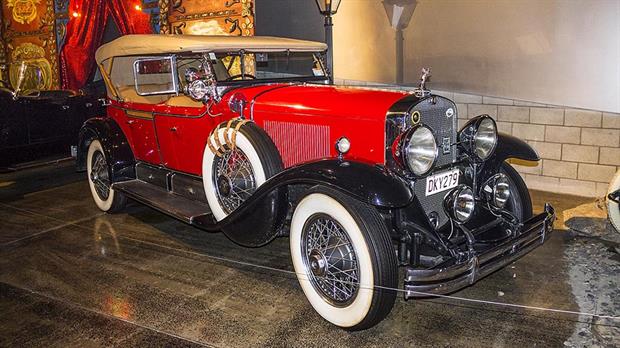
1929 Cadillac Dual Cowl Phaeton
Cadillac was the first company to introduce the V8 engine in 1915, and it was a 90-degree version of the eight that was used in this Series 341-B model from 1929. Cadillac introduced a couple of automotive firsts that year with synchromesh gearing for the three-speed transmission, and safety glass. This Dual Cowl Phaeton bodied model gave rear passengers their own cowl and windshield and it was one of 12 Fisher body styles offered by Cadillac on its 140-inch wheelbase chassis. Customers could choose from a further 33 Fleetwood body styles. Both the Fisher and Fleetwood coachbuilding companies were bought by Cadillac to ensure exclusivity of design for its models.
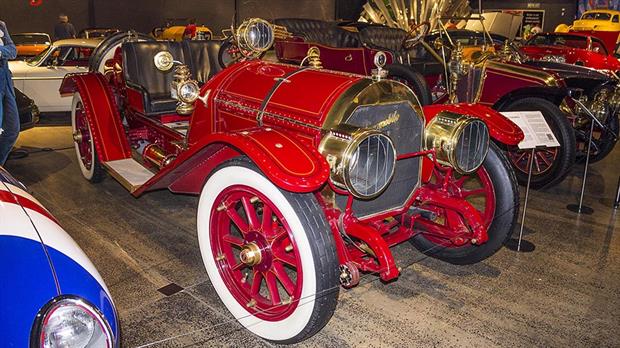
Locomobile Speedster
Not only touted as the most expensive car in America in its day but also the best built, Locomobiles were renowned for their reliability in an age where mechanical woes were common. The company’s slogan was ‘four cars a day’ to stress the drive for quality rather than simply churning cars out, and each Locomobile was tested strenuously to ensure its reliability before being sold. Most Locomobile chassis were fitted with limousine coachwork but some like this one were adorned with speedster bodies. Its 8.6-litre six-cylinder engine was good for 67kW. This particular car on display has been subjected to a $200,000 restoration process.
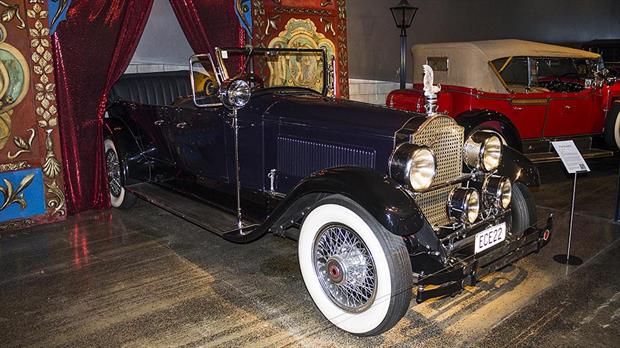
1927 Packard 7 Seater Touring
This car is powered by a straight eight, an engine type that was introduced by Packard in 1924. The side valve 5.9-litre engine had a low compression ratio of 4.5:1 (common at the time due to low octane fuel) and developed 63kW at 3000rpm. With a counterbalanced crankshaft, the engine delivered a smoother operation than the competition’s V8s and straight sixes, particularly at speed. This Packard sports one of Rene Lalique’s glass mascots, the ‘Coq Nain’. Lalique, a prominent glass maker in the art deco era and then jeweller, created around 30 mascot designs for the wealthy to adorn their cars with. These rarities can range in price from several thousand dollars to a record $US300,000 paid for one example. The record price for the Coq Nain is said to be $US20,000.
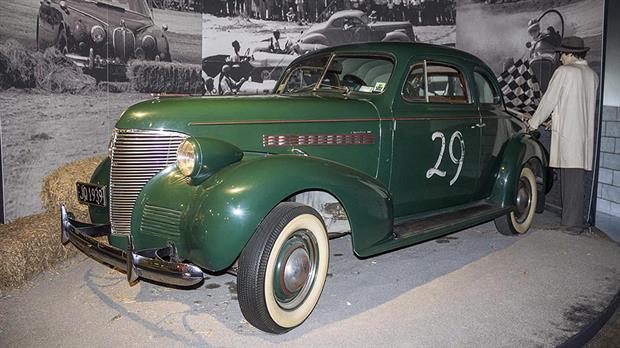
1939 Chevrolet Master 85 Business Coupe
Chevrolet’s Business Coupe had just two seats and none in the rear, the space given over to cargo for the businessman to carry his wares about. It was one of 13 passenger car body types offered that year by Chev, including the option of a chassis with the front cowl and windscreen ready for mounting your own bodywork. Power came from a new 3539cc six-cylinder making 63kW and 230Nm from 900-2000rpm, similar numbers to Ford’s V8 of the time. This car is part of a display that commemorates the Tahunanui Beach races held from 1949 to 1977 organised by the Nelson Car Club on New Year’s eve.
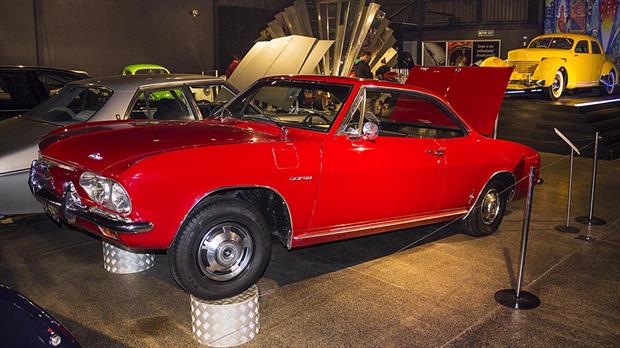
1965 Corvair Corsa
An innovation from Chevrolet at the time, the Corvair was introduced in 1960 and featured a rear mounted, air-cooled flat-six engine. Its novel packaging and the introduction of a turbocharged engine variant in 1962 were overshadowed by the controversy surrounding its handling. Thanks to the swing arm arrangement of the rear suspension and management’s decision to delete a front roll bar on the grounds of costs, it was unsafe. The roll bar was reinstated and the rear suspension replaced in 1965 with a fully independent set-up but the damage to the car’s reputation was done. The model died in 1969 as buyers were swept up in the craze of Mustang and the introduction of the Camaro in 1967.
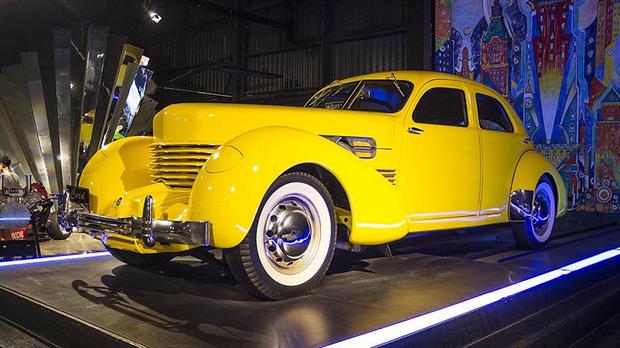
1937 Cord 812
The Cord 812 was the continuation of the 810, the work of designer Gordon M. Buehrig. The Cord is notable for its front-wheel drive layout, with the transmission placed in front of the engine. With no driveshaft or transmission tunnel, the cabin is low and so the Cord didn’t require running boards. The sleek design featured hidden door hinges and a rear-hinged bonnet while the headlamps disappeared into the front guards. The wraparound grille was unique at the time, as was a fuel filler door to keep the lines of the bodywork smooth around the rear. The 810 was powered by a 4739cc, 93kW V8 with a four-speed transmission. The 812 of 1937 debuted a supercharger version with its chrome-plated external exhaust pipes. The car proved popular on account of its styling but was plagued with transmission problems.
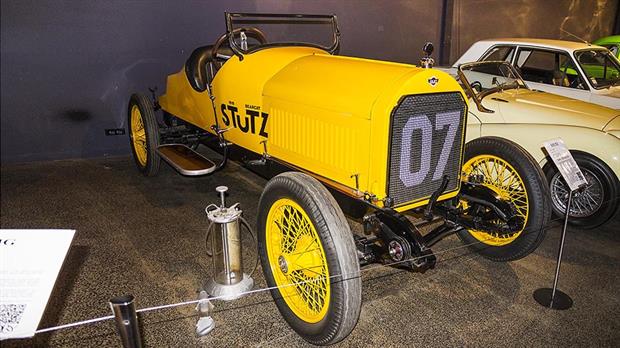
1919 Stutz Bearcat
Famous for its minimalistic bodywork and its dog house bonnet, the Stutz Bearcat was essentially a stripped-for-racing version of the company’s standard passenger car chassis, with a shorter wheelbase. First introduced in 1912, it was powered by a 6.4-litre, 45kW four cylinder. The cars were right hand drive with the gearshifter and brake lever for the rear brakes placed on the outside of the cabin. This 1919 car was the beneficiary of a new 5.9-litre 16-valve four cylinder which made a reliable 60kW. The Bearcat lasted through to the early-30s with a 32-valve eight cylinder engine good for 100mph, but Stutz went bust in 1934.
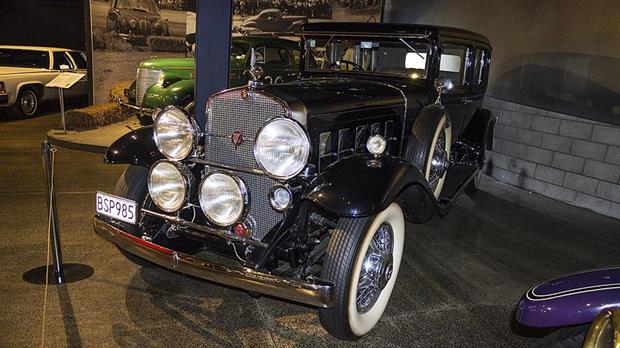
1930 Cadillac V16
Cadillac’s V16 was conceived in the mid-1920’s when stock market speculators were big on conspicuous consumption, and a car with more cylinders than the competitors was seen as ideal. Designed primarily for improved smoothness, the V16 was essentially two straight eights on a common crankshaft. The cylinder banks were set at a 45-degree angle while the engine featured a single intake and exhaust valve per cylinder. While big on cylinders, it wasn’t overly large in terms of displacement for the day at 7.4-litres. It made 123kW at 3500rpm but low end torque and smooth operation were key. There were around 70 different body styles produced on the V16 chassis. Just over 4000 V16 models were produced over 11 years, though most of those were sold in the 1930s as the Great Depression took hold.
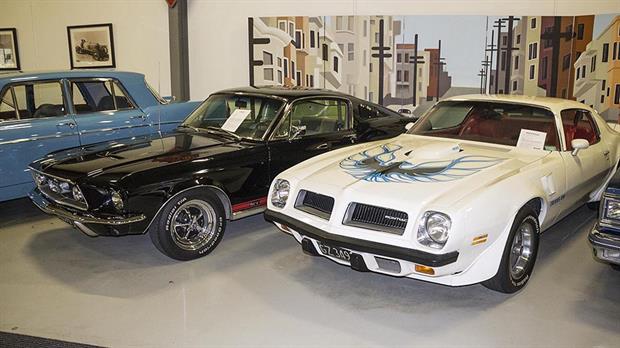
1967 Ford Mustang and 1974 Pontiac Firebird Trans Am
The Mustang GT of 1967 got a power boost courtesy of a bigger 6.4-litre V8 to combat the Camaro’s new SS model line. The Mustang for ’67 was a larger car with more space under the bonnet and more sheet metal tacked onto the rear. This particular model helped elevate Mustang’s standing even further with its starring role in Steve McQueen’s Bullitt. By the time the second-generation of the Pontiac Firebird come along, the muscle car theme was waning, the cars weighed down by increased safety standards and the engines choked by emission regulations, this car’s 6.6-litre V8 outputting 186kW in its highest tune. The Trans Am was the top Firebird and buyers could option it with the ‘screaming chicken’ bonnet sticker. The Firebird was also a movie star, the 1977 Trans Am featuring in Smokey and the Bandit.


